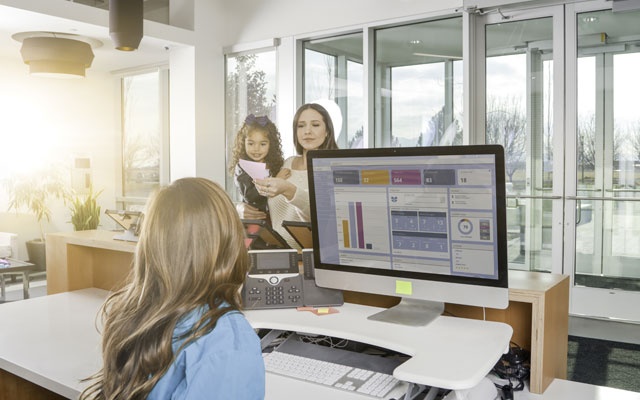Accounting, like music, comes in many different forms. It is not a single entity that encompasses all needs, but a varied type of specialty that has the ability to help an organization in a variety of ways. Accounting, many may not realize, has many different styles. There are:
- Lean Accounting
- Auditing
- Bookkeeping
- Chartered Accounting
- Cost Accounting
- Management Accounting
- Financial Accounting
- Social Accounting
- Forensic Accounting
- Taxation Accounting
- Public Accounting
- Internal Accounting
- External Accounting
While all these types of accounting are interesting in their own rights, the one form that we will be looking at will be one of the most important type for a company, managerial accounting.
Managerial accounting, sometimes called management accounting, is a type of accounting that is concerned with the provisions and the use of accounting information to a manager in an organization. Managerial accounts provide this service because it helps the managers make business decisions that will be better for the company based on the information provided.
Unlike financial accounting, which is reported publicly so that shareholders and investors can determine the strength of the company, managerial accounting is not reported publicly and is confidential, used only by the management. As well, unlike financial accounting, managerial accounting tends to be more forward looking than historical. Financial accounting looks at what happened in the past year or quarter, while forward looking managerial accounting helps to make decisions based on future financial data.
The Three Areas of Managerial Accounting
- Strategic Management. This is the advancement of the role of the management accountant to make the accountant at a strategic par with the entire organization.
- Performance Management. This is the development of business decision making that will manage the performance of the company.
- Risk Management. This contributes to the practice of identifying, measuring, managing, and reporting any risks to the overall achievement of the goals that the company has set for itself.
In addition to the three focuses discussed above, managerial accounting has six aims that it uses as a guide for its use:
- Creating strategies for the business to succeed in the future.
- Planning and building activities for the business.
- Helping to make decisions in the business.
- Creating the best and most optimal use of resources in the company.
- Helping with the financial report preparation of the company.
- Protecting and safeguarding the assets of the company.
History of Managerial Accounting
Managerial accounting has a long history in the Western world, dating back to the early 19th century during the time of the Industrial Revolution. It was during this period that many companies were heavily controlled by the owner-manager who borrowed money based not on credit, but on their personal relationships with others who had money.
These companies did not have a shareholder structure, and there was little debt in these companies so there was no need to create large and complex financial reports. This is where managerial accounting came in. it was sophisticated, but easy to understand and it provided all the essential information that was needed for large scale productions such as steel and textiles.
By the 20th century, companies were facing new pressures through regulation, federal taxation, creditors, and capital markets. As a result, many firms had to raise funds from sources of capital far removed from traditional areas. To be able to do this, companies had to use detailed financial reports that would be able to show the strength of the company, based on historical data, to investors and creditors.
This new type of accounting had to be based on outside suppliers of capital that used those financial statements. Due to this new emphasis on inventory costing procedures by accountants at the turn of the century, there was a profound change in management accounting. Through the subsequent decades, management accountants would increasingly focus their efforts to ensure that the financial accounting objectives were met, and with financial reports released on time. With this shift from managerial accounting to financial accounting, managerial accounting became stagnant. Up until the 1980's, management accounting practices were pushed to the side as financial accounting methods that had been used since the days of World War One kept companies looking back rather than forward.
During the better part of the 20th century, while historical and financial accounting reigned supreme, there were some forward thinking companies that looked at managerial accounting as the method that would help their business the most.
Conclusion
Accounting in companies has generally focused on how the company did in the past, as a basis to gain more investors for the future. However, this is beginning to change as companies start looking forward towards how their companies will do in the future. Through the use of management accounting, companies can make the decisions that will help their businesses in the future and keep the company going strong into the future.
Financial accounting may have been the dominant form of accounting during the 20th century, but times have changed and now companies are looking to the 21st century as the era of management accounting.
In subsequent chapters we will learn about how management accounting differs from traditional accounting, how it fits into an organization, and the various types of managerial accounting methods that exist out there.
Traditional versus Managerial Accounting
The way that managerial accounting differs from traditional accounting is through cost control techniques. While cost accounting is an integral and central part of managerial accounting, it is not a large part of traditional accounting methods. Managerial accounting also uses different techniques, including variance analysis, life cycle cost analysis, and activity based costing, which take specific aspects of the business into account.
- Cost accounting is the comparison of actual and budgeted costs of the raw materials that a company uses and the labor that is used during the production period.
- Life-cycle cost analysis looks at the ability of the manager to influence the overall cost of making a product. It knows that the ability of the manager to influence the cost is greatest when it is still in the design stage of the product.
- Activity-based accounting recognizes that manufacturing costs are determined by all the small activities. This shows managers that the key cost control method is optimizing the efficiency of those small activities. This is also known as cause and effect accounting.
While traditional accounting looks at profit margins, net profit, expenditures, and more, managerial accounting understands that in a manufacturing environment, the avoidance of events that are disruptive (breakdowns for example) is of far greater importance than finding cheap raw materials. This also allows labor to be de-emphasized as a driver of cost, and concentrates on activities as driving costs down when they are done efficiently.
There are several other differences between financial and managerial accounting:
- As has been stated, with managerial accounting there is a much greater emphasis on the future, rather than the on the past. Planning is a big part of a manager's job and as a result, managerial accounting has a strong orientation towards the future. It should be understood that in managerial accounting seeing the future as not only a reflection of a past, but understanding that changes are always taking place in economics necessitates emphasis on the future. This means that managerial accounting is based heavily on estimates of the future, more than by summaries of what has happened in the past.
- In financial accounting, data has to be both objective and verifiable. The reason for this is that investors want to know that the financial information they are being given to enhance their investment, is accurate and truthful. Managerial accounting is only for internal use by the manager, so while the information needs to be relevant; it does not have to be objective or verifiable. As a result, the managerial accounting system needs to be flexible enough that it can provide any data that is relevant to a decision that a manager may have to make.
- Precision is not as important to managerial accounting as is timeliness. Decisions often have to be made quickly, and managers want to have a good estimate immediately, rather than wait a week or more for something that is more precise. Many of the decisions that managers will make will affect thousands or millions of dollars, therefore being accurate to the cents is not needed. Some experts in managerial accounting feel that the estimates only have to be accurate to three digits. Therefore, if the company does work in the millions, it only needs to be accurate to the thousands. Financial accounting puts much more emphasis on precision but precision costs time and resources, so managerial accountants will want less emphasis on precision to make their decisions. Managerial accounting puts a lot of emphasis on non-monetary data, which can include things like customer satisfaction versus financial accounting which does not emphasize customer satisfaction.
- A significant difference between financial accounting and managerial accounting is how each method looks at the company. Financial accounting is concerned with the entire company as a whole. This is why they address the net profit of the company, the total expenditures of the company, and more. Managerial accounting looks at the parts of the company that can include things like departments, production lines, sales forces, sales territories, and more. Managerial accounting puts a primary importance on segment accounting, while financial accounting does not.
- Financial accounting, as has been mentioned, must be accurate and must follow rules because it is used for external use for the company to acquire investors and shareholders. As a result, financial accounting follows the Generally Accepted Accounting Principles (GAAP). These sets of rules help to reduce fraud and misrepresentations. Managerial accounting, in contrast, does not always concern itself with the GAAP because it is for internal use. A good example of this is under the GAAP, land must be stated at its historical cost when it is put on a financial report. If management is debating moving a store to a new location, and therefore selling the land that the store sits on currently, management would then want to know the current market price of the land, not the historical price. This is in clear contrast to the GAAP.
- While financial accounting can be forged at times, it is mandatory for a company to publish financial accounting. The Securities and Exchange Commission requires that financial accounting to be done through periodic financial statements. However, managerial accounting is not mandatory for a company to do. A company can choose to do managerial accounting, or choose not to without any penalty from the SEC. There are no regulatory bodies for managerial accounting, so there is no need to do any reporting.
How Managerial Accountants Fit Into a Corporation
Managerial accountants in today's corporations have a dual reporting relationship. Managerial accountants are partners in the financial and operational decision making based on the information that they provide. Management accountants manage the business team, while at the same time reporting responsibilities to the finance organization of the company.
Managerial accountants in the organization then provide forecasting and planning tools to the managers who make the decisions.
Managerial accounting has a background in many management methodologies. Here are just a few:
- GPK or Grenzplankostenrechnung is a German costing method that provides consistent and accurate information on how costs for managers are calculated on a product or on a service.
- Lean Accounting was developed in the 1990's which follows a philosophy that traditional accounting methods are good for mass production, but not good for understanding manufacturing costs and services.
- Resource Consumption Accounting is a fully integrated and principle based management accounting approach that allows managers to get support information that can optimize operation of the company.
- Throughput Accounting is a methodology that recognizes the interdependences of modern production processes. This is done by looking at a product, customer or supplier and using the accounting to measure the contribution done per unit of the resource.
- Transfer pricing is a methodology that is used in manufacturing, as well as in banking. It is the principle used to assign a value and a revenue amount to business units. When the transfer pricing is applied, business units produce segment financial results which can be used by internal observers (as well as external observers) to evaluate the performance of the pricing.


































